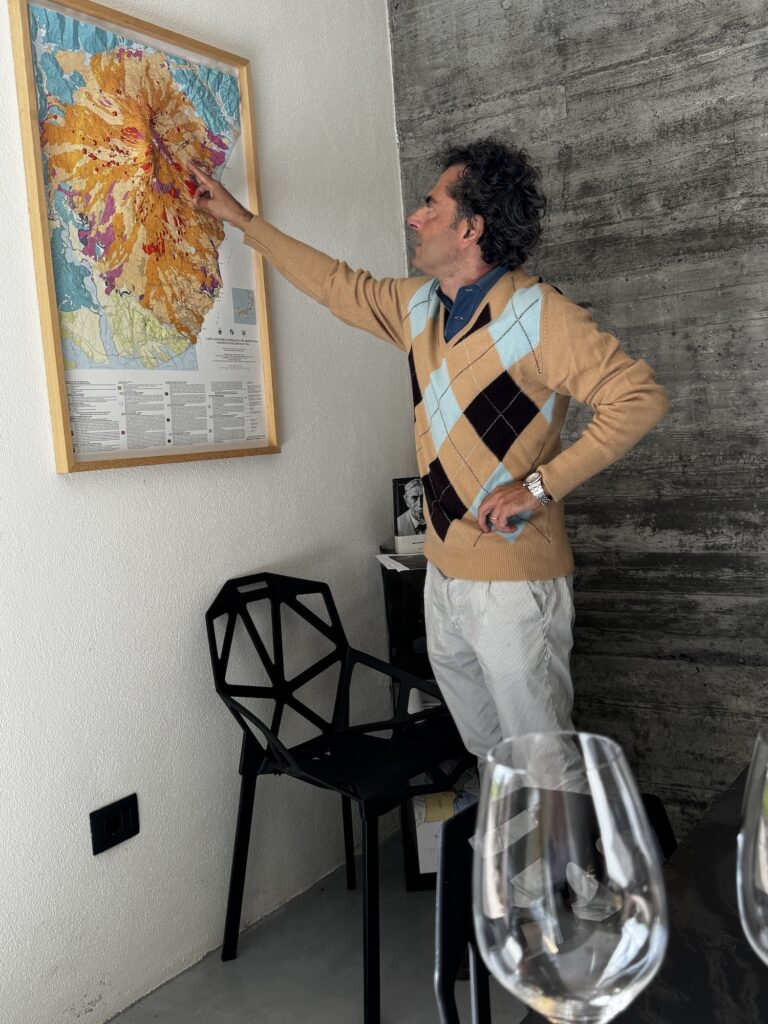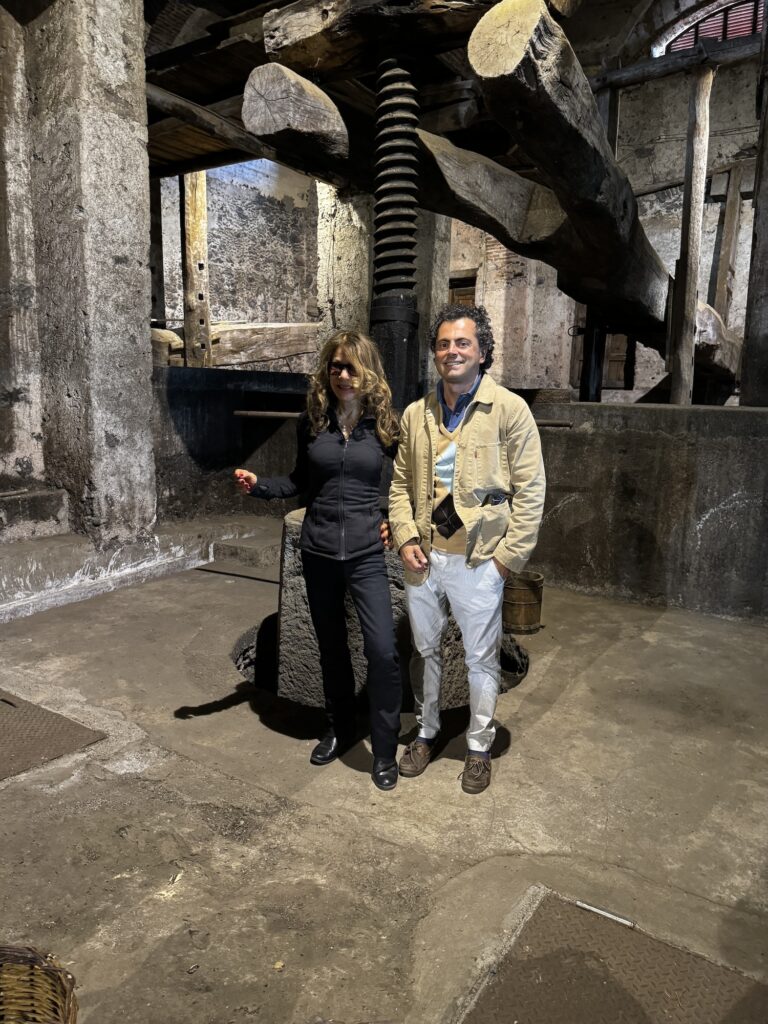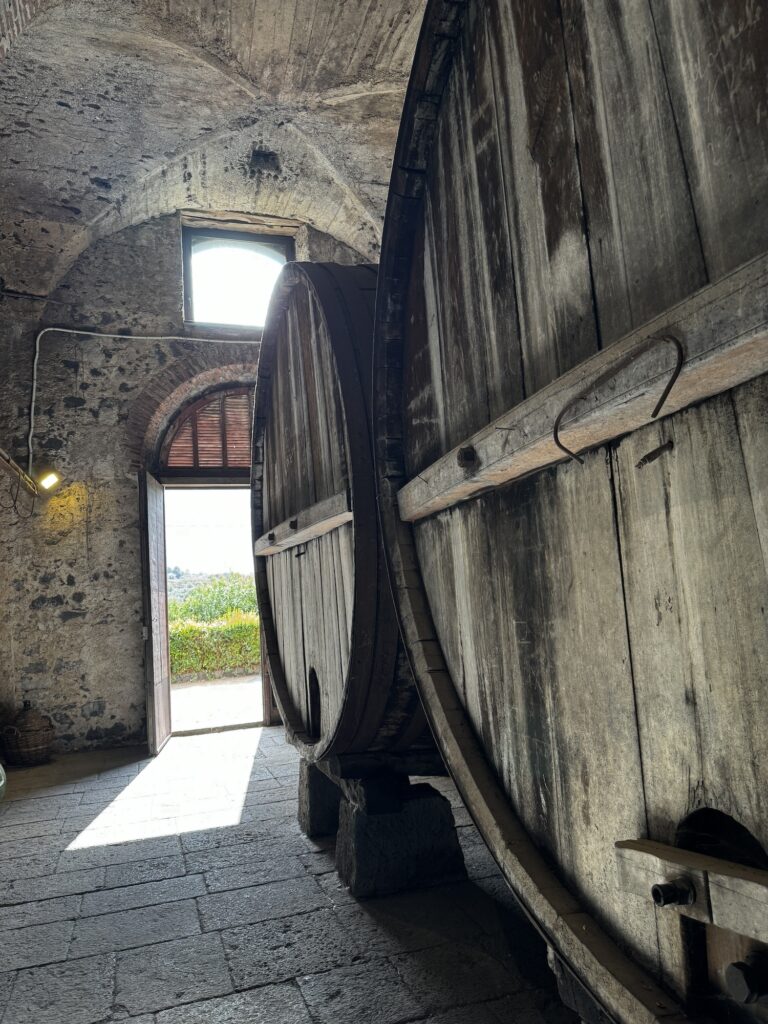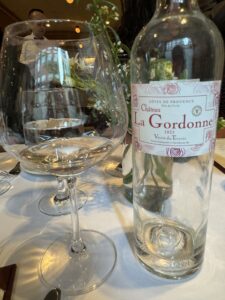Visiting Graci Winery on Mount Etna

One of the highlights of my visit to Mount Etna to explore new wineries and meet passionate winemakers was my time at Graci Winery. It is owned by the dynamic Alberto Aiello Graci.
Alberto, with his effortlessly stylish Milanese flair and aristocratic looks, was incredibly down-to-earth. Despite his fashionable exterior, his deep connection to the land and his “peasant’s passion” for winemaking is clear. The first part of the visit was the tour of the nearly 200-year-old winery. It was inspiring to see someone so rooted in both tradition and innovation, bringing new life to a winery steeped in Sicilian history.
The Graci winery is located in Passopisciaro, on the north slope of Mount Etna.Campore Winery on Mount Etna This is an area where viticulture has thrived for thousands of years. The winery sits at an impressive altitude of 600 to 1,000 meters, where the conditions are ideal for growing native Sicilian grapes.
As we walked through the vineyards, Alberto shared that the planting density here ranges from 6,000 to 10,000 vines per hectare. Many of the vines are still on their original, ungrafted rootstocks. These vines have survived due to the protection offered by the volcanic soil. Thus, they survived the phylloxera epidemic that devastated vineyards across Europe.

Inside the winery, I marveled at the centuries-old wine press and the massive wooden casks known as “tini,” which have been used for generations to ferment the region’s finest wines. While regulations have changed and some of the older casks are no longer in use, the visual reminder of the winery’s past was powerful.
It was clear that Graci’s ethos centers around preserving tradition while embracing modern techniques where appropriate.
A Tasting That Reflects Tradition and Terroir

After the tour, we headed into the sleek, modern tasting room. Although small, the space was well-suited for focusing on what really mattered: the wine. Alberto’s dedication to minimal intervention in both the vineyard and the cellar was evident in every sip.
At Graci, Alberto cultivates native grapes such as Nerello Mascalese, Nerello Cappuccio, Carricante, and Catarratto. He avoids using herbicides, allowing the land to maintain its natural balance. Additionally he uses large wooden barrels to let the true character of the wine shine through.
We started the wine tasting with the 2022 Etna Bianco Arcuria, a pure Carricante that offered a nervy, salty minerality with savory undertones. This white wine showcased the volcanic soil’s influence, with a rich yet fresh mouthfeel that made it incredibly memorable. It was a reflection of the land’s unique personality and spoke volumes about the meticulous care that goes into crafting each bottle of Graci wine.
Next, we moved on to the 2022 Etna Rosso, which Alberto referred to as an “entry-level” wine. Made predominantly from Nerello Mascalese, it was anything but basic. The wine was vibrant, with red fruit and subtle earthy tones, balanced by a bright acidity. Alberto explained that the addition of Nerello Cappuccio helps round out the wine, adding depth without overpowering its elegant structure.
The highlight of the tasting was undoubtedly the 2020 Etna Rosso Arcuria Sopra di Pozzo, a wine that truly exemplifies Graci’s dedication to preserving the soul of Etna. With its transparent color, vibrant acidity, and floral notes of rose petals and violets, this wine had a tension and finesse that was reminiscent of a fine Burgundy.
“We must find our own way,” Alberto said, explaining that while they are inspired by the great wines of Piedmont, Graci is determined to create wines that respect the energy and purity of Etna’s terroir.
The Future of Etna Wines
Alberto is very much aware of the challenges and opportunities that come with making wine on the slopes of an active volcano. When asked about the potential danger of lava flows, he was unfazed. “Lava? We are fatalists,” he said with a laugh. “It’s normal for us.”
This nonchalant attitude reflects the deep connection the people of Etna have to their land—a place where the elegance of the wine is perfectly balanced with the rusticity of the environment.
We finished the tasting with a taste of the 2012 Etna Rosso Arcuria, a wine that had been aging gracefully for over a decade. Its flavors had evolved into something deeper and more complex, with notes of blood orange and mature tannins, yet it still retained the bright liveliness typical of Etna reds.
Alberto emphasized the importance of allowing the wine to evolve naturally, avoiding heavy oak influence that could mask the wine’s expression of terroir.
As we left Graci, it was clear that this winery represents the very best of Etna’s winemaking renaissance.
By combining tradition, respect for the land, and a clear vision for the future, Alberto Aiello Graci is crafting wines that not only tell the story of the vineyard but also reflect the soul of Sicily itself.




